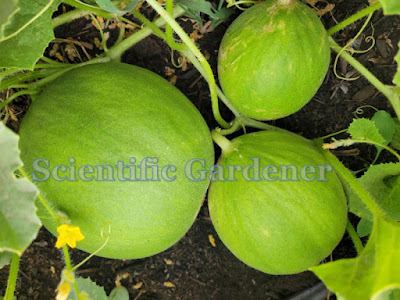Given the appearance of the Barattiere, it is more easy to imagine that it is a regular melon than it being a carosello-type fruit. It doesn’t look like many of the other carosello varieties, and likely doesn’t directly descend from the same line of immature melons as the carosello do.
Unlike many of the other carosello varieties, the history of the Barattiere has much better documentation. The Barattiere comes from a town called Fasano, in the Brindisi district, Puglia, where this region looks towards East Europe. The first individual to cultivate it was Leonardo Pinto, a farmer from Fasano nicknamed " barattiere. Many in and around Fasano, call it "cucumarazz", to support the thesis that it is a hybrid, since it is neither cucumber nor watermelon. The first cultivation of this product dates back to the late 1940s, when Leonardo Pinto planted seeds given to him by a monk friend of his. Several factors that made the variety successful included its ease of cultivation, strange shape, and its refreshing and pleasant taste. Word got around and Leonardo Pinto was generous, sharing the seed freely among all the local farmers.
The Barattiere is interesting in that the flavor of the fruit would be different depending on the local soil and water conditions. Slightly saltier waters or more alkaline soils change the flavor of the variety. In areas where water was scarce, the seeds would be planted between rocks on the hillsides, so that the soil would remain moist for longer and allow the vines to more fully develop into the summer months, when the juicy fruit would provide a welcome relief from the heat of the day’s labors. Many of the fruit would be picked from August through October.*
Other names for the carosello Barattiere include “Fasano” “Ciancuiffo” “The Rouge” among others. The name “Barattiere” means to barter. While it is unlikely that Leonardo Pinto used his fruit to barter with others, it may be the case that in the late summer heat, the local juicy vegetables were used to barter for other commodities during in many a Puglian marketplace.
Given the pest pressure presented to my crop by the incessant waves of cucumber beetles, the vines managed to produce fruit. In the beginning, I did have some losses from cool temperatures, overwatering from the beetles - but by the end of the season, I managed to have a healthy-enough crop that the fruit produced a plentiful harvest of seeds.
One of the real benefits of having more space to grow was that I was able to grow out Barattiere from five different seed sources. This enabled me to select for the source that was the most productive as well as those with the most tender flesh. The productive ones, I will be calling my future “Barattiere” while the more tender-fleshed fruit, I will be saving for my future “Fasano”.
In just weeding and killing cucumber beetles, I spent well over 40 hours of my life. By the end of the summer I was just exhausted and spent. Because of this experience, I decided that I needed to scale back for 2024. While I am very grateful for the opportunity to grow at the organic olive orchard, in the end I was very grateful to be done. *Some source material was taken from: From: http://www.osservatoriooggi.it/mensile/ieri/12858-date-un-%E2%80%98barattiere%E2%80%99-agli-assetati






















































No comments:
Post a Comment
Dear Gardening Friends,
I look forward to learning more about gardening with you. Your comments help me recognize that gardening is a life-long journey.
To advertisers: Note that this blog is concerned with gardening and gardening techniques. Please do not attempt to advertise here by leaving a comment. Depending upon how egregious the comment is, it may be deleted.